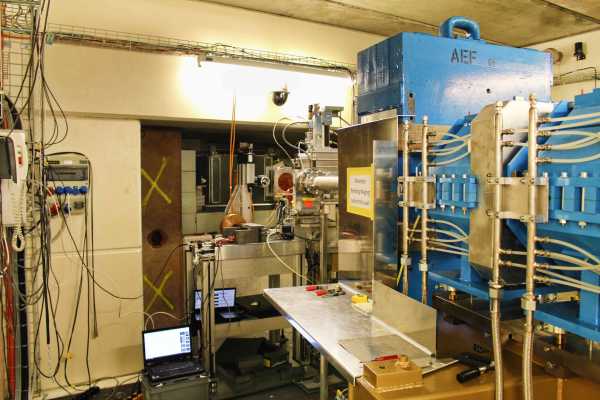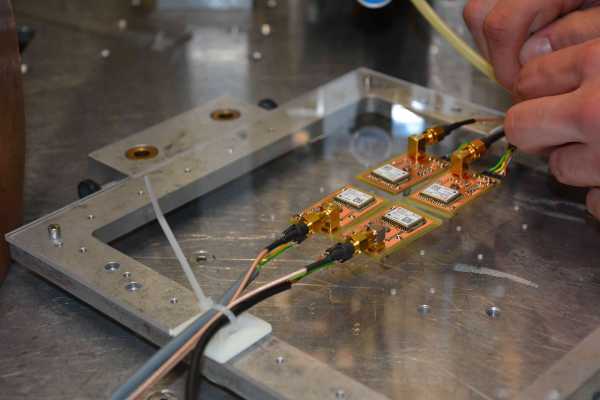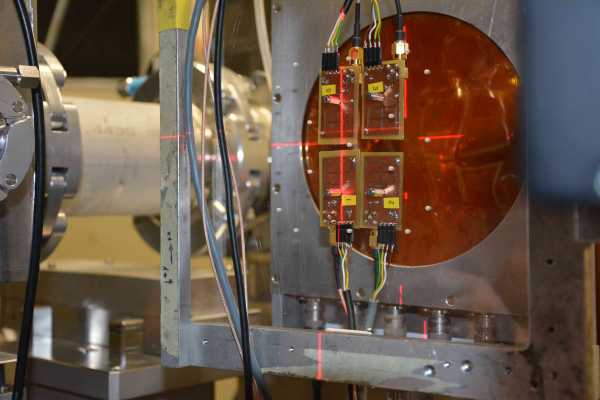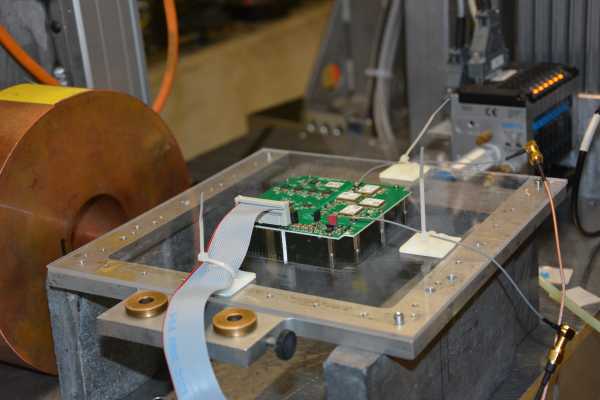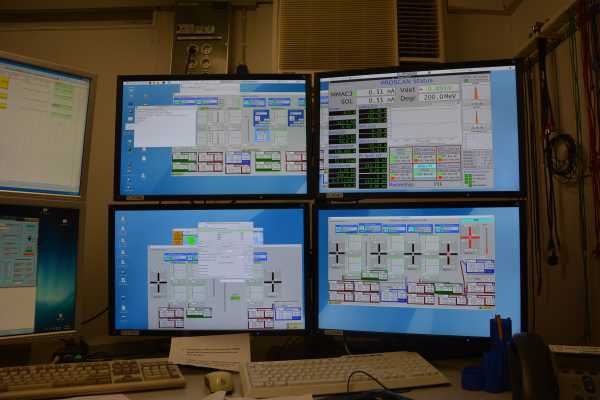Radiation Tests
Radiation tests at PSI
Overview
The radiation tests have been carried out at the proton irradiation facility (PIF) of the external pagePaulScherrer Institutecall_made (PSI) in Villigen, Switzerland. The PIF is extensively used for testing spacecraft components under realistic proton spectra as encountered in space.
Two different experiments have been carried out at the PSI:
- a total ionizing dose (TID) test to assess the positioning performance of the receivers after being exposed to irradiation and to detect any nonreversible hardware failures;
- an analysis of single event effects (SEE) to characterize the receiver behavior during irradiation.
During the TID experiments, the devices under test (DUT) have been irradiated for 60 minutes with the total dose expected in a three-year mission run time (20 krad). The second experiment was designed to provoke and analyze single event effects. The receivers have been exposed to radiation at a constant flux at three different energy levels for 15 minutes each. Four receivers have been exposed to the radiation during each experiment; a different set of receivers was used for the TID and SEE tests. The quality of the receiver provided position, velocity and time (PVT) has been evaluated for all DUT before and after the irradiation to identify possible quality degradations caused by the radiation.
Results
The most important result of the TID test is that all four receivers are still fully functional after the experiments. The performance of the receivers seems unaltered by the exposure to the radiation.
The SEE tests showed that one might expect a single event effect every 4 days in orbit. These SEEs usually lead to a quite harmless soft reset of the receiver and finally to only a few seconds without a PVT solution. Every 20 days, a severe SEE must be expected leading to a hard reset of the receiver, which in turn leads to a missing PVT solution for up to a minute. In all cases, however, the receivers reinitialized themselves without any interaction from the operator. This is quite important for an autonomous operation in space.

